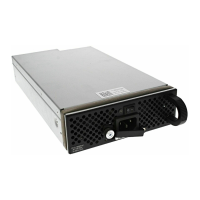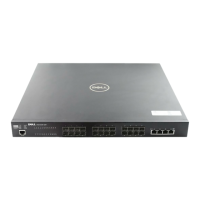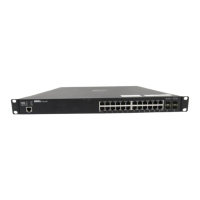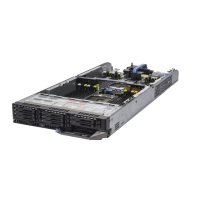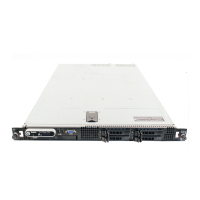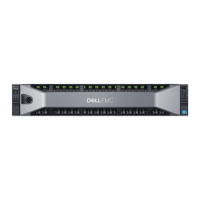Interfaces | 229
VLAN Interfaces
VLANs are logical interfaces and are, by default, in Layer 2 mode. Physical interfaces and port channels
can be members of VLANs. For more information about VLANs and Layer 2, refer to Layer 2 and Virtual
LANs (VLAN).
FTOS supports Inter-VLAN routing (Layer 3 routing in VLANs). You can add IP addresses to VLANs and
use them in routing protocols in the same manner that physical interfaces are used. For more information
about configuring different routing protocols, refer to the chapters on the specific protocol.
A consideration for including VLANs in routing protocols is that you must configure the
no shutdown
command. (For routing traffic to flow, the VLAN must be enabled.)
Assign an IP address to an interface with the following command in the INTERFACE mode:
Figure 13-9 shows a sample configuration of a VLAN participating in an OSPF process.
Figure 13-9. Sample Layer 3 Configuration of a VLAN
Note: To monitor VLAN interfaces, use the Management Information Base for Network Management of
TCP/IP-based internets: MIB-II (RFC 1213).
Note: You cannot simultaneously use egress rate shaping and ingress rate policing on the same VLAN.
Note: You cannot assign an IP address to the Default VLAN, which, by default, is VLAN 1. To assign
another VLAN ID to the Default VLAN, use the default vlan-id vlan-id command.
Command Syntax Command Mode Purpose
ip address ip-address mask [secondary]
INTERFACE Configure an IP address and mask on the interface.
• ip-address mask: enter an address in
dotted-decimal format (A.B.C.D) and the mask
must be in slash format (/24).
• secondary: the IP address is the interface’s
backup IP address.
interface Vlan 10
ip address 1.1.1.2/24
tagged TenGigabitEthernet 2/2-13
tagged TenGigabitEthernet 5/0
ip ospf authentication-key Dell Force10
ip ospf cost 1
ip ospf dead-interval 60
ip ospf hello-interval 15
no shutdown
!

